CYCLOPROTHRIN
Synonym(s):(RS)-α-Cyano-3-phenoxybenzyl (RS)-2,2-dichloro-1-(4-ethoxyphenyl)cyclopropanecarboxylate
- CAS NO.:63935-38-6
- Empirical Formula: C26H21Cl2NO4
- Molecular Weight: 482.36
- MDL number: MFCD00210269
- EINECS: 200-589-5
- SAFETY DATA SHEET (SDS)
- Update Date: 2025-10-23 17:25:30
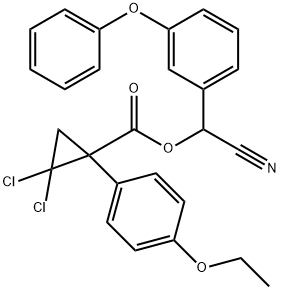
What is CYCLOPROTHRIN?
The Uses of CYCLOPROTHRIN
Cycloprothrin is used to control rice water weevils and other insects in paddy rice, fruit, vegetables, tea, cotton, soyabeans and in forestry.
Definition
ChEBI: A carboxylic ester having 2,2-dichloro-1-phenylcyclopropanecarboxylic acid as the acid component and hydroxy(3-phenoxyphenyl)acetonitrile as the alcohol component.
General Description
Cycloprothrin is an insecticide, used for controlling insect pests on rice plants and vegetables.
Metabolic pathway
The structure of the acid moiety of cycloprothrin is rather unusual and thus deserves special attention. The compound has two chiral centres and therefore is a mixture of four stereoisomers; it is used as such. Degradation and metabolism studies have been reported for flooded soil, rice plants and rat. The results show that cycloprothrin is degraded by oxidation, hydrolysis and conjugation reactions as are other members of the class. However, metabolism in rice is very slow.
Degradation
Cycloprothrin is a stable compound but it is hydrolysed under alkaline conditions. It is relatively stable to photodegradation.
Properties of CYCLOPROTHRIN
| Melting point: | <25℃ |
| Boiling point: | 142.5 °C |
| Density | 1.36±0.1 g/cm3(Predicted) |
| vapor pressure | 2.13×10-6 Pa (20 °C) |
| storage temp. | 2-8°C |
| form | neat |
| Water Solubility | 0.09 mg l-1(25 °C) |
| BRN | 14340823 |
Safety information for CYCLOPROTHRIN
| Signal word | Warning |
| Pictogram(s) |
 Exclamation Mark Irritant GHS07  Environment GHS09 |
| GHS Hazard Statements |
H317:Sensitisation, Skin H410:Hazardous to the aquatic environment, long-term hazard |
| Precautionary Statement Codes |
P261:Avoid breathing dust/fume/gas/mist/vapours/spray. P272:Contaminated work clothing should not be allowed out of the workplace. P273:Avoid release to the environment. P280:Wear protective gloves/protective clothing/eye protection/face protection. P302+P352:IF ON SKIN: wash with plenty of soap and water. P333+P313:IF SKIN irritation or rash occurs: Get medical advice/attention. |
Computed Descriptors for CYCLOPROTHRIN
New Products
4,4-Difluoropiperidine hydrochloride tert-butyl 9-methoxy-3-azaspiro[5.5]undecane-3-carboxylate Indole Methyl Resin N-Isopropylurea N,N-Dicyclohexylcarbodiimide(DCC) MELDRUMS ACID 5-METHYLISOXAZOLE-4-CARBOXYLIC ACID Magnessium Bis glycinate Zinc ascorbate 1-bromo-2-butyne 2-acetamidophenol 9(10H)-anthracenone Erythrosin B, 4-Piperidinopiperidine 2-((4-morpholinophenylamino) (methylthio) methylene) malononitrile 2,4-dihydroxybenzaldehyde 3-(4-morpholinophenylamino)-5-amino-1H-pyrazole-4-carbonitrile Methyl 2-methylquinoline-6-carboxylate 2,6-dichloro-4-nitropyridine 4-Bromo-2-chlorobenzonitrile 2-(benzylamino)acetic acid hydrochloride 4-(tert-Butoxycarbonylamino)but- 2-ynoic acid 3,4-dihydro-2H-benzo[b][1,4]dioxepine 1-Phenyl-1-cycloprppanecarboxylicacidRelated products of tetrahydrofuran
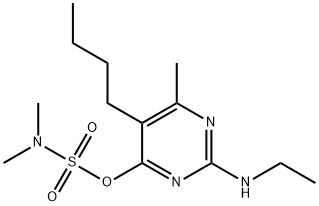


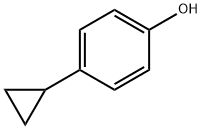
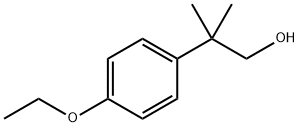


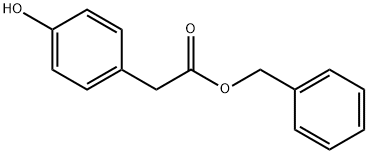
You may like
-
 Cycloprothrin CAS 63935-38-6View Details
Cycloprothrin CAS 63935-38-6View Details
63935-38-6 -
 3-(4-amino-1-oxoisoindolin-2-yl)-1-methylpiperidine-2,6-dione 98%View Details
3-(4-amino-1-oxoisoindolin-2-yl)-1-methylpiperidine-2,6-dione 98%View Details -
 614-19-7 98%View Details
614-19-7 98%View Details
614-19-7 -
 3112-85-4 Methyl phenyl sulfone 98%View Details
3112-85-4 Methyl phenyl sulfone 98%View Details
3112-85-4 -
 20677-73-0 (2,2-diethoxyethyl)methylamine 98%View Details
20677-73-0 (2,2-diethoxyethyl)methylamine 98%View Details
20677-73-0 -
 3-(4-(hydroxyamino)-1-oxoisoindolin-2-yl)piperidine-2,6-dione 98%View Details
3-(4-(hydroxyamino)-1-oxoisoindolin-2-yl)piperidine-2,6-dione 98%View Details -
 57381-49-4 2-bromo-4-chlorobenzonitrile 98%View Details
57381-49-4 2-bromo-4-chlorobenzonitrile 98%View Details
57381-49-4 -
 4,6-dichloropyrimidine-5-carbaldehyde 98%View Details
4,6-dichloropyrimidine-5-carbaldehyde 98%View Details
5305-40-8
